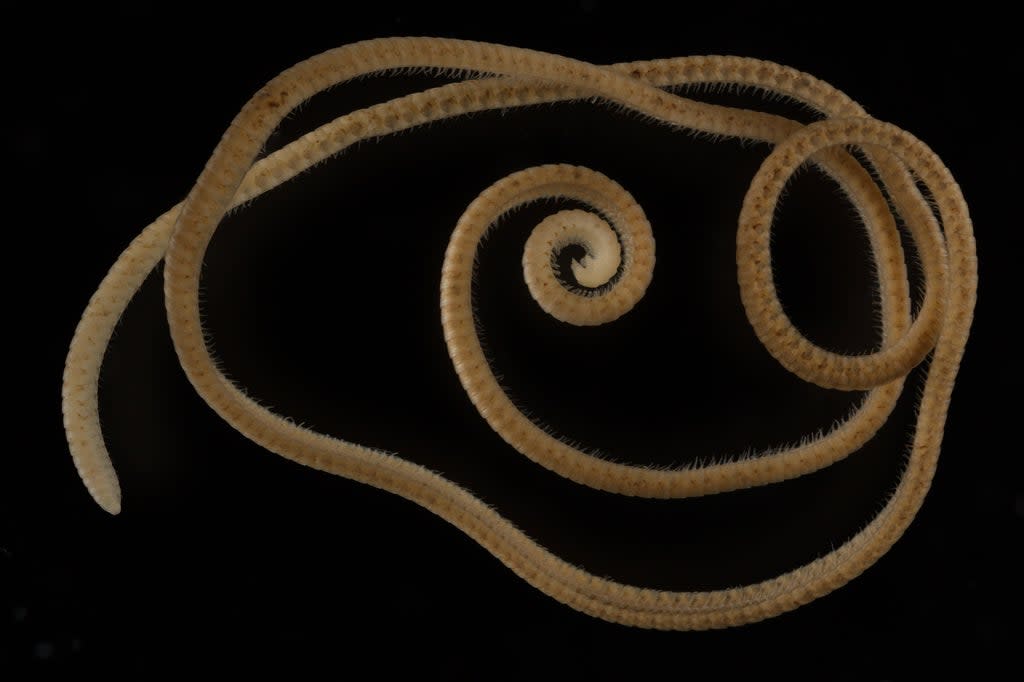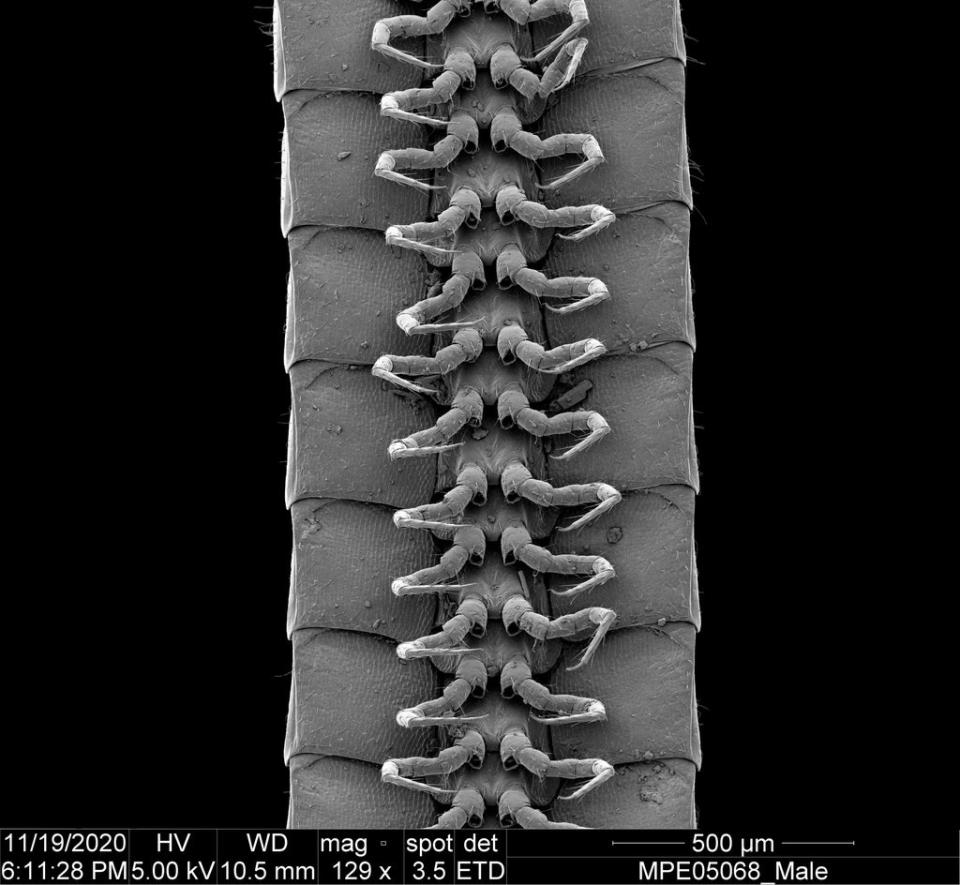Scientists discover first-ever ‘true’ millipede with over 1,000 legs

Scientists have discovered the first-ever “true millipede” with more than 1,000 legs in a minefield in Australia, making it the creature with the greatest number of legs ever known to humans.
While the name “millipede” derives from the Latin words mille (thousand) and pes (foot), until now no millipede had been found with more than 750 legs, the scientists said.
The creature was found 6m underground in a drill hole created for mineral exploration in the mining area of the Eastern Goldfields Province of Australia, the scientists noted in a study published in the journal Scientific Reports on Thursday.
They found that the millipede belongs to a new species named Eumillipes persephone and has a total of 1,306 legs—more than any other known animal.
Scientists measured four members of the new species and found that they are eyeless, have short legs, and cone-shaped heads with antennae and a beak. They have long, thread-like bodies with up to 330 segments and are up to 0.9mm wide and 95.7mm long.
A @SciReports paper reports the discovery of the first millipede with more than 1,000 legs. Prior to this, no millipede had been found with more than 750 legs. https://t.co/l6fnahh4Tw pic.twitter.com/j1erGXbegd
— Nature Portfolio (@NaturePortfolio) December 16, 2021
“Here we report the discovery of E. persephone, the first super-elongated millipede known from Australia, and the new world record holder of the animal with greatest number of legs,” the scientists wrote in the study.
“Discovered 6m below ground in a drill hole created for mineral exploration, E persephone possesses troglomorphic features; it lacks eyes and pigmentation, and it has a greatly elongated body—features that stand in stark contrast to its closest surface-dwelling relatives in Australia and all other members of its order,” they added.

The researchers also found that the new species is distantly related to the previous record-holder for the greatest number of legs, the Californian millipede Illacme plenipes.
They speculate that the large number of segments and legs seen in this millipede species may enable it to generate pushing forces to move through narrow openings in the soil habitats they live in.
Millipedes are among the earliest animals on the planet to breathe atmospheric oxygen, and have lived on Earth for more than 400 million years.
Although there are about 12,000 known millipede species, with some extinct ones that grew to two metres in length, researchers say there are still nearly 80,000 species that are yet to be described.
Scientists believe such invertebrate creatures living below the Earth’s surface comprise a cryptic and diverse fauna that remain vastly understudied, despite their ecological importance in the filtration of groundwater and the screening of environmental toxins.
They called for efforts to conserve this underground habitat to minimise the impact of mining in this region.
“Discovered in the resource-rich Goldfields-Esperance region and threatened by encroaching surface mining, documentation of this species and conservation of its habitat are of critical importance,” they added.

